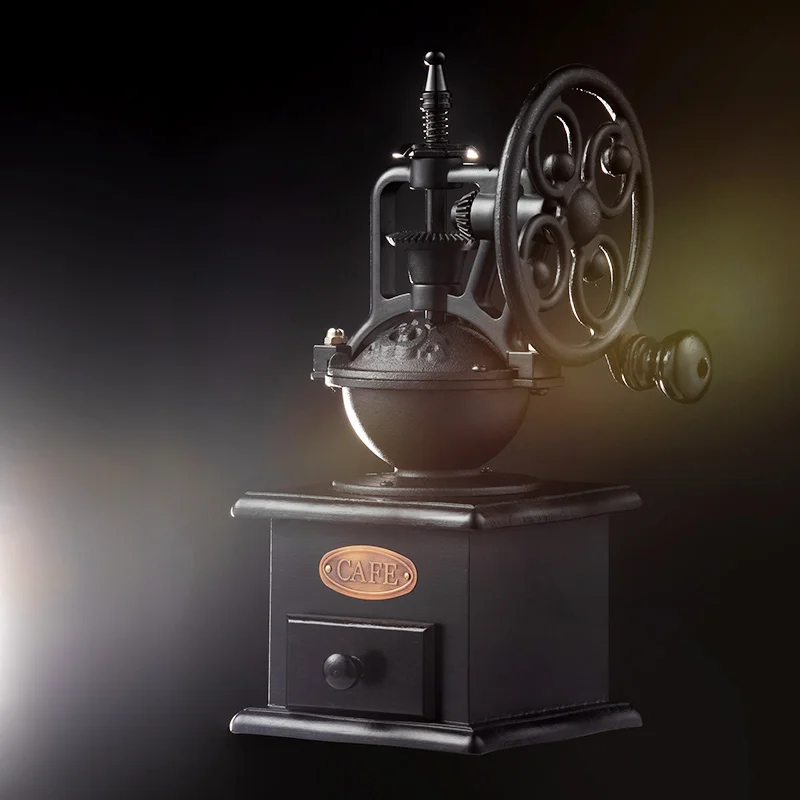Have you ever wondered why the same coffee beans sometimes taste drastically different? The culprit might be hiding in your grinder. While we often focus on bean quality, water temperature, and brewing methods, one critical factor frequently goes unnoticed: the heat generated during grinding. This invisible enemy silently degrades your coffee’s flavor profile before brewing even begins.
The Science Behind Burr Heat Generation in Coffee Grinders
Understanding Friction and Heat Transfer During Grinding
At its core, coffee grinding is a mechanical process where burrs crush beans into smaller particles through friction. As these burrs rotate against each other, the mechanical energy converts to thermal energy – what we experience as heat. This isn’t just theoretical physics; it’s happening in your coffee grinder every morning.
When coffee beans pass between burrs, the friction creates heat that transfers directly to your coffee grounds. Different burr materials conduct heat differently – steel burrs tend to heat up quickly and transfer that heat efficiently to coffee particles, while ceramic burrs heat more slowly but retain that heat longer.
Temperature increases during normal grinding typically range from 70-90°F (21-32°C), but can climb to 150°F (65°C) with extended grinding. Understanding the fundamental science of grinding affects grind settings and ultimately, the quality of your brew. Additionally, burr size is directly related to heat generation during grinding – larger burrs generally distribute heat more effectively.
Primary Heat Sources in the Grinding Process
Several factors contribute to heat generation when grinding coffee:
- Burr friction: The primary heat source – burrs rubbing against each other and against coffee beans
- Motor heat: Particularly noticeable during extended grinding sessions
- Bean-to-bean and bean-to-burr friction: Coffee beans themselves create friction as they move through the grinding chamber
- Grind speed/RPM: Higher rotation speeds generate significantly more heat
- Ambient temperature: Starting with a warm grinder means more heat accumulation
Different burr types generate varying amounts of heat during grinding. Commercial grinders can experience temperature increases of 20-30°F (11-17°C) during continuous operation, with flat burrs typically generating more heat than conical designs due to their larger contact surface area.
Chemical Changes: How Heat Alters Coffee Compounds
Volatile Organic Compounds (VOCs) and Premature Evaporation
Coffee contains hundreds of volatile organic compounds (VOCs) – the chemicals responsible for the complex aromas and flavors we love. These delicate compounds are highly sensitive to temperature changes. When your grinder generates excess heat, these VOCs evaporate prematurely, literally disappearing into thin air before you’ve had a chance to extract them in your cup.
| Compound | Contributes to | Temperature Sensitivity |
|---|---|---|
| 2-Furfurylthiol | Roasted aroma | Very high – begins degrading at 95°F (35°C) |
| β-Damascenone | Fruity, floral notes | High – significant loss at 105°F (40°C) |
| Guaiacol | Smoky, spicy notes | Medium – begins degrading at 120°F (49°C) |
The most aromatic compounds begin to evaporate at surprisingly low temperatures. Research suggests that grinding speed directly impacts heat generation and VOC loss, with some compounds showing up to 30% reduction in concentration with just a 20°F (11°C) increase in grinding temperature.
Oxidation Acceleration: The Enemy of Fresh Coffee
Heat is a powerful catalyst for oxidation reactions. When coffee oils are exposed to higher temperatures during grinding, oxidation accelerates dramatically, creating stale, rancid flavors reminiscent of cardboard or paper.
Key effects of heat-accelerated oxidation include:
– Degradation of flavorful lipids into flat, dull-tasting compounds
– Development of unpleasant bitterness not related to proper extraction
– Significant reduction in sweetness and complexity
– Creation of “off” flavors that mask the bean’s natural characteristics
It’s worth noting that chemical reactions approximately double in rate with every 18°F (10°C) temperature increase. This means grounds heated just 20°F (11°C) above normal during grinding oxidize at more than twice the rate of properly ground coffee. Finding the ultimate espresso grind size is essential, as it helps minimize heat generation during the grinding process by reducing necessary grinding time.
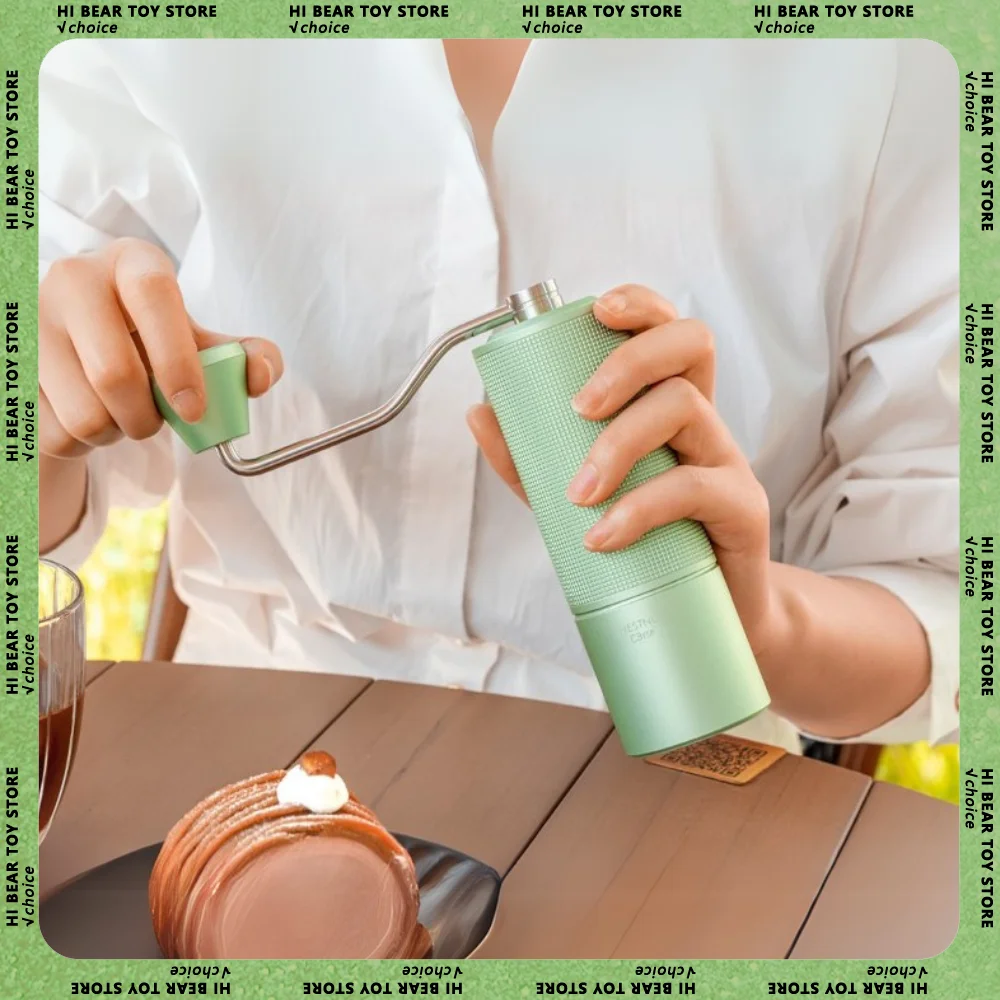
Physical Transformations: Particle Size and Extraction Impact
Heat’s Effect on Bean Brittleness and Grind Consistency
Temperature significantly alters coffee bean structure during grinding. As beans warm, they change from being ideally brittle (which promotes clean fracturing) to slightly more plastic and malleable. This subtle shift creates serious consequences for grind quality.
Warmed beans don’t fracture as cleanly, resulting in more “fines” (tiny particles much smaller than your target grind size) and “boulders” (oversized particles). Light roasted beans, being denser and harder, often generate more frictional heat and can see a 5-15% increase in fines when ground at elevated temperatures. Flat burr design impacts heat generation and particle consistency, with quality flat burrs often producing more uniform results if properly cooled.
These inconsistencies in particle size create major extraction problems – small particles over-extract (producing bitterness) while large particles under-extract (contributing sourness), resulting in a cup that’s simultaneously bitter and sour.
Clumping, Static, and Distribution Problems
Heat increases several physical problems with your coffee grounds:
- Increased static electricity: Heated grounds can experience up to 30% more static charge, causing them to cling to surfaces and distribute unevenly
- Clumping tendency: Warmer grounds stick together more readily, forming clumps that resist even water penetration
- Dosing inconsistency: Static and clumping make consistent dosing nearly impossible
- Tamping issues: Clumps create density variations that persist even after careful tamping
- Flow problems: These physical changes create channeling – water finding the path of least resistance rather than extracting evenly
These issues are particularly problematic for espresso preparation, where even extraction is critical. Proper grind settings help minimize heat-related clumping issues and improve overall shot quality.
Tasting the Difference: Flavor Impact of Heat-Affected Grounds
The Sensory Profile of Heat-Damaged Coffee
The flavor differences between properly ground coffee and heat-affected coffee are distinct and noticeable, especially to trained palates:
Properly ground coffee typically displays:
– Vibrant acidity (pleasant brightness)
– Clear, defined flavor notes
– Detectable sweetness
– Harmonious bitterness (when appropriate)
– Aromatic complexity
– Distinctive origin characteristics
Heat-affected coffee often presents:
– Muted acidity
– Blurred, generic flavor profile
– Diminished sweetness
– Harsh, aggressive bitterness
– Simplified aroma
– “Baked” or “cooked” flavor notes
These differences manifest differently across brewing methods. Espresso amplifies these defects dramatically, while immersion methods like French press may partially mask them. Proper espresso grinders help minimize heat-related flavor issues, protecting your coffee’s inherent qualities.
Brewing Inconsistencies and Extraction Challenges
Heat-affected grounds create numerous brewing challenges that frustrate even experienced baristas:
For espresso, heat-damaged grounds often cause:
– Unpredictable shot timing (variations of 5-10 seconds despite identical preparation)
– Inconsistent flow rates
– Visual channeling (dark spots, blonde streaks)
– Difficulty achieving proper extraction percentages
For pour-over brewing:
– Uneven bed saturation
– Clogging and stalling (extending brew time by 30-45 seconds)
– Difficulty achieving target brew times
– Inconsistent extraction between brews
These challenges directly connect to the impact of heat retention in metal coffee grinders and explain why temperature management is crucial for brewing consistency.
Fine Adjustment Hand Grinder, Precision Manual Grinder, Travel Coffee Grinder
Price range: $185.11 through $494.63 Select options This product has multiple variants. The options may be chosen on the product pageHand Burr Grinder, Hand Crank Coffee Grinder, Manual Espresso Grinder, Portable Coffee Grinder
Price range: $262.72 through $300.22 Select options This product has multiple variants. The options may be chosen on the product pageManual Burr Mill, Manual Coffee Grinder Stainless Steel, Manual Coffee Mill Grinder, Mechanical Coffee Grinder
Price range: $127.26 through $130.32 Select options This product has multiple variants. The options may be chosen on the product pageHand Burr Grinder, Manual Coffee Grinder Stainless Steel, Precision Manual Grinder
Price range: $183.64 through $187.52 Select options This product has multiple variants. The options may be chosen on the product page
Factors Influencing Heat Generation in Coffee Grinders
Burr Design and Material Considerations
The physical design and materials used in your grinder substantially impact heat generation:
| Burr Type | Heat Generation | Heat Transfer | Best Use Case |
|---|---|---|---|
| Flat Steel | High | Fast | Speed, precision (with cooling) |
| Conical Steel | Medium | Fast | Balanced performance |
| Flat Ceramic | Medium-High | Slow | Consistent home use |
| Conical Ceramic | Low | Slow | Heat-sensitive coffees |
Larger burrs (64mm vs 50mm) typically generate less heat when grinding the same amount of coffee because they require fewer rotations to complete the job. Ceramic burrs have different thermal properties than metal burrs – they heat up more slowly but retain that heat longer, making them beneficial for short grinding sessions but potentially problematic for multiple back-to-back grinds.
Special burr coatings like titanium nitride (TiN) can reduce friction and subsequent heat generation by 10-15%, while maintaining sharp cutting surfaces longer than standard steel burrs.
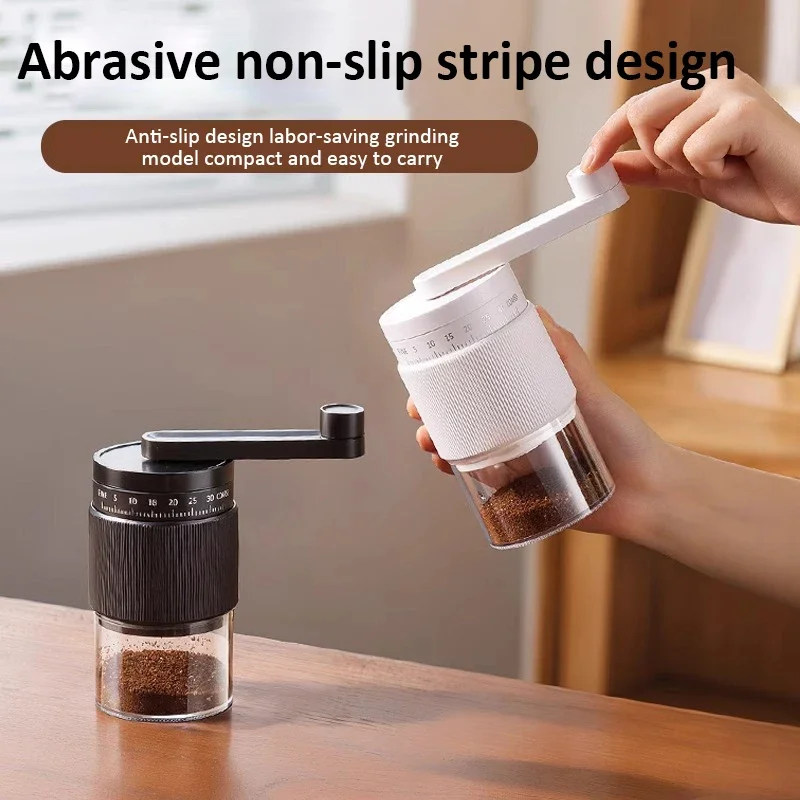
Operational Factors: Speed, Duration, and Volume
How you operate your grinder dramatically affects heat generation:
Motor speed (RPM): Higher speeds create substantially more heat. High-speed grinders (1000+ RPM) can heat grounds 2-3 times more than low-speed grinders (400-600 RPM).
Grinding duration: Continuous grinding for more than 30 seconds significantly increases temperature. Grinding 18g (0.6oz) for espresso typically takes 10-15 seconds in an electric grinder, but back-to-back grinding without rest periods compounds heat problems.
Batch size: Larger batches require longer grinding times, generating more heat through extended operation. Limiting batch sizes to 30g (1oz) or less helps manage temperature.
Grind fineness: Finer settings create more resistance and friction. Espresso grinding generates approximately twice the heat of a medium drip grind due to increased burr contact and resistance.
Proper grind adjustment techniques can minimize heat generation by optimizing these operational factors for specific brewing methods.
Detecting Heat Issues: Signs Your Grinder Is Running Too Hot
Sensory Indicators of Heat-Damaged Grounds
It’s important to recognize when heat is affecting your coffee. Here’s a practical checklist:
Touch test: Grounds should feel cool or room temperature. If they feel noticeably warm, heat damage has likely occurred.
Aroma check: Freshly ground coffee should be intensely fragrant. Diminished aroma or burnt/metallic smells indicate heat problems.
Visual inspection: Excessive clumping, unusual texture, or grounds that appear more oily than normal may signal heat issues.
Sound changes: A grinder that begins to sound strained or changes pitch during operation may be generating excess heat due to mechanical issues.
Taste test: Increased bitterness, decreased acidity, and muted flavor notes in the cup are clear indicators of heat-damaged grounds.
Precision grinders help maintain consistent temperatures throughout the grinding process, reducing these warning signs and improving cup quality.
Brewing Performance Red Flags
Be alert for these brewing issues that signal heat-related problems:
- Espresso shots running 5-7 seconds faster than normal despite identical preparation
- Visible channeling in espresso pucks
- Pour-over brews stalling midway through the draw-down phase
- Inconsistent extraction despite consistent brewing parameters
- Coffee that tastes different from cup to cup despite using the same beans and methods
These problems often persist even when other variables are controlled, pointing to heat as the culprit.
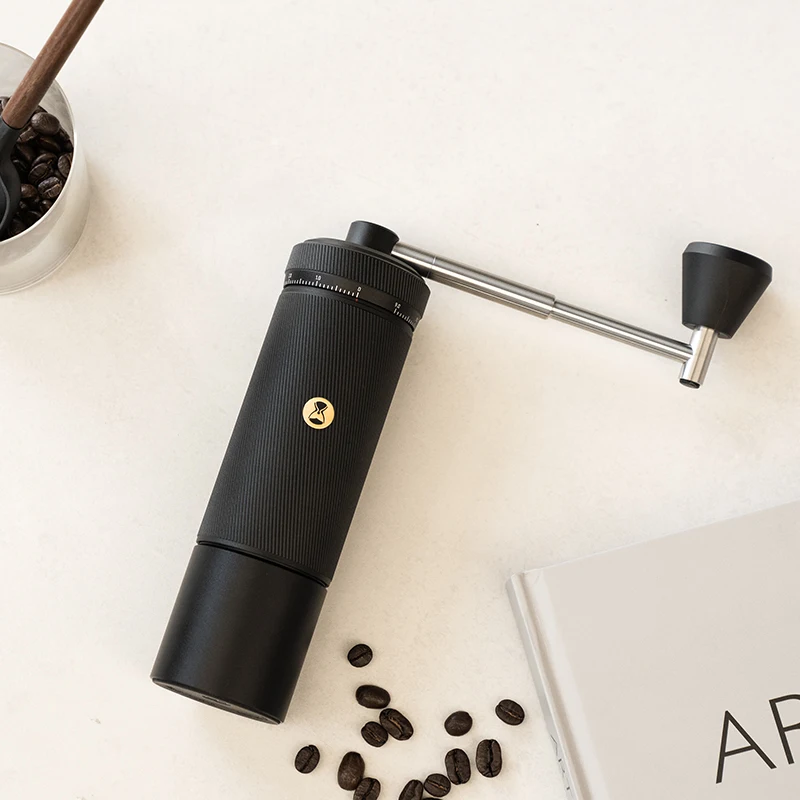
Practical Solutions: Keeping Your Grinder and Coffee Cool
Grinding Techniques to Minimize Heat Transfer
These practical approaches can significantly reduce heat issues:
Grind in smaller batches: Limit grinding to 20-30g (0.7-1.0oz) at a time to reduce continuous operation and heat buildup.
Adopt “grind on demand”: Grind only what you need immediately before brewing rather than grinding larger amounts for future use.
Use pulse grinding: Implement 10-15 second grinding bursts with 10-second pauses, which can reduce heat by up to 40% compared to continuous grinding.
Allow proper rest periods: Give your grinder 1-2 minutes between grinding sessions to dissipate heat.
Adjust grinding speed: If possible, use slower grinding speeds, especially for heat-sensitive light roasts and espresso grinds.
Manual grinders typically generate less heat than electric models because of their naturally slower operation and lack of motor heat, making them excellent options for maintaining optimal flavor.
Equipment Selection and Maintenance for Heat Reduction
Choose and maintain your equipment with heat management in mind:
- Look for grinders featuring low RPM motors (under 800 RPM) and larger burrs when possible
- Clean your grinder regularly (every 1-2 months or 30-50 pounds of coffee) to remove buildup that increases friction
- Replace burrs according to manufacturer recommendations (typically after 500-1500 pounds of coffee)
- Consider grinders with active cooling features for high-volume grinding
- Ensure proper burr alignment, as misaligned burrs create excess friction and heat
Understanding flow dynamics helps mitigate heat-related extraction issues and makes these maintenance tasks even more important for consistent results.
Advanced Cooling Techniques for the Dedicated Coffee Enthusiast
For those seeking maximum flavor protection, consider these advanced approaches:
The Freezer Method
Storing coffee beans in the freezer before grinding can significantly reduce grinding temperature. When done properly, grinding frozen beans can reduce burr temperature by 15-25°F (8-14°C) compared to room temperature beans.
Pros:
– More brittle beans fracture more cleanly
– Significantly reduced heat generation
– Better particle size distribution
– Enhanced aroma preservation
Cons:
– Requires careful moisture management
– Beans must be in airtight containers to prevent condensation
– Can be inconvenient for daily coffee preparation
– May require grinder adjustments (frozen beans often require slightly finer settings)
Pre-cooling Grinder Components
Some enthusiasts pre-cool their grinder’s grinding chamber and burrs before use.
Pros:
– Creates a cooler starting point for grinding
– Particularly effective for long grinding sessions
– No need to freeze actual coffee beans
Cons:
– Risk of condensation if cooled too much
– Temporary effect that diminishes during grinding
– Impractical for everyday coffee preparation
Supplemental Content: Answering Common Questions About Grinder Heat
Is Heat Generation Different Between Brew Methods?
Different brewing methods have varying sensitivity to heat-related grinding issues:
Espresso is most vulnerable to heat problems because it:
– Uses the finest grind size, generating more friction and heat
– Extracts under 9 bars (130 psi) of pressure, amplifying any defects
– Makes heat-related taste problems approximately 2-3 times more noticeable than filter methods
Turkish coffee, with its superfine grind, generates even more heat but paradoxically masks some heat-related defects due to its unique brewing method.
Pour-over and drip methods show moderate sensitivity, while French press and cold brew, with their coarser grinds, generally experience fewer heat-related problems.
Hand Grinders vs. Electric: The Heat Differential
Hand grinders offer significant thermal advantages over electric models:
Quality hand grinders typically operate at 30-60 RPM compared to electric grinders at 500-1,400 RPM. This dramatic difference in speed results in significantly lower heat generation. While manual grinding takes 4-8 times longer, it generates only about 25-30% of the heat of electric grinders.
Hand grinders also eliminate motor heat entirely, removing a significant heat source. Their typically smaller batch size (designed for single doses) further reduces heat accumulation. For temperature-sensitive light roasts and delicate single-origin coffees, hand grinders produce significantly less heat than electric counterparts.
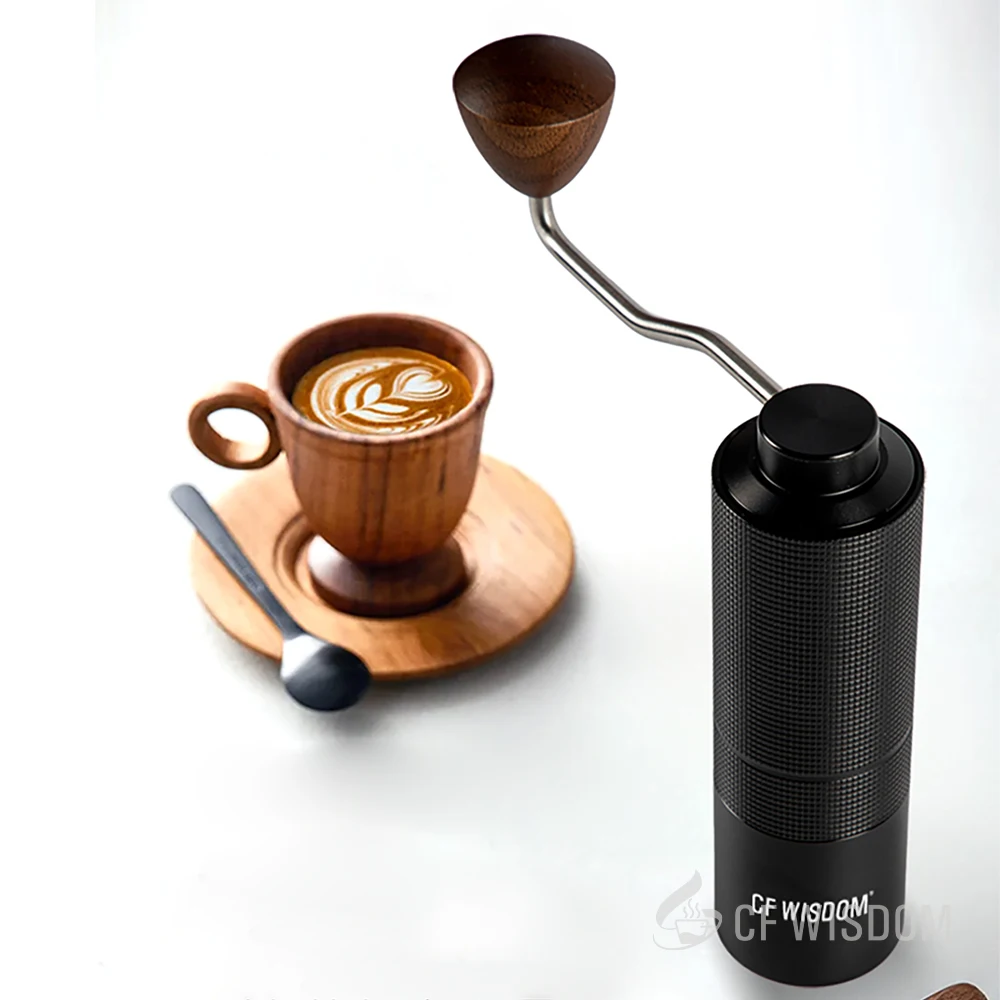
Conclusion: Temperature – The Hidden Variable in Coffee Quality
The hidden cost of heat during coffee grinding is a price paid in flavor. What seems like a simple mechanical process actually triggers complex chemical and physical changes that directly impact your coffee’s taste. By understanding these principles, you can make better equipment choices and adopt grinding techniques that preserve the delicate flavors you’re paying for in quality beans.
Whether you’re a casual coffee drinker or dedicated enthusiast, managing grinder heat is one of the simplest yet most effective ways to improve your daily brew. The next time you grind coffee, remember that controlling temperature isn’t just about brewing water – it starts with protecting your grounds from the very beginning of the process.
Take this knowledge into your kitchen and taste the difference proper grinding temperature makes. Your morning cup will thank you.

